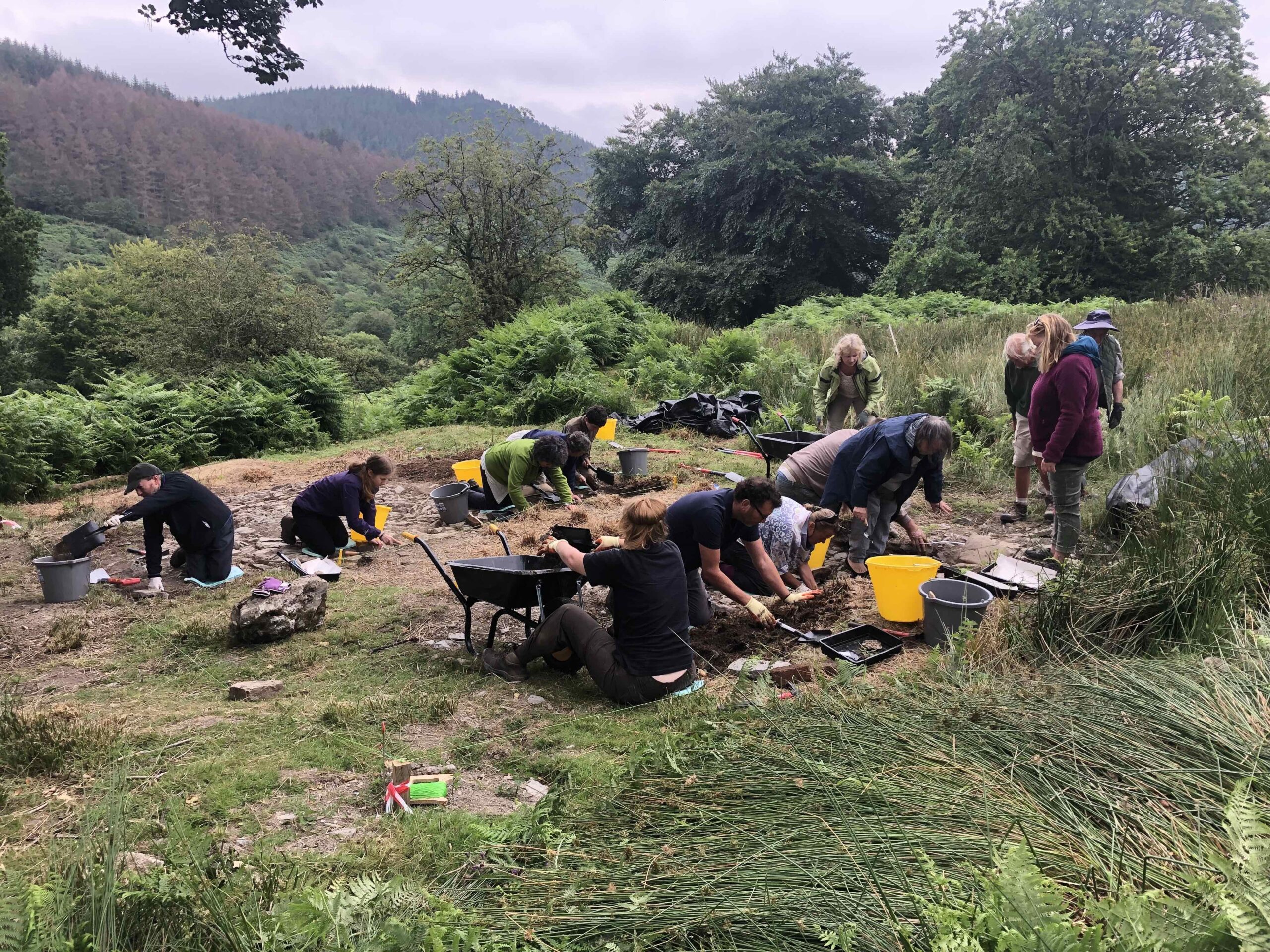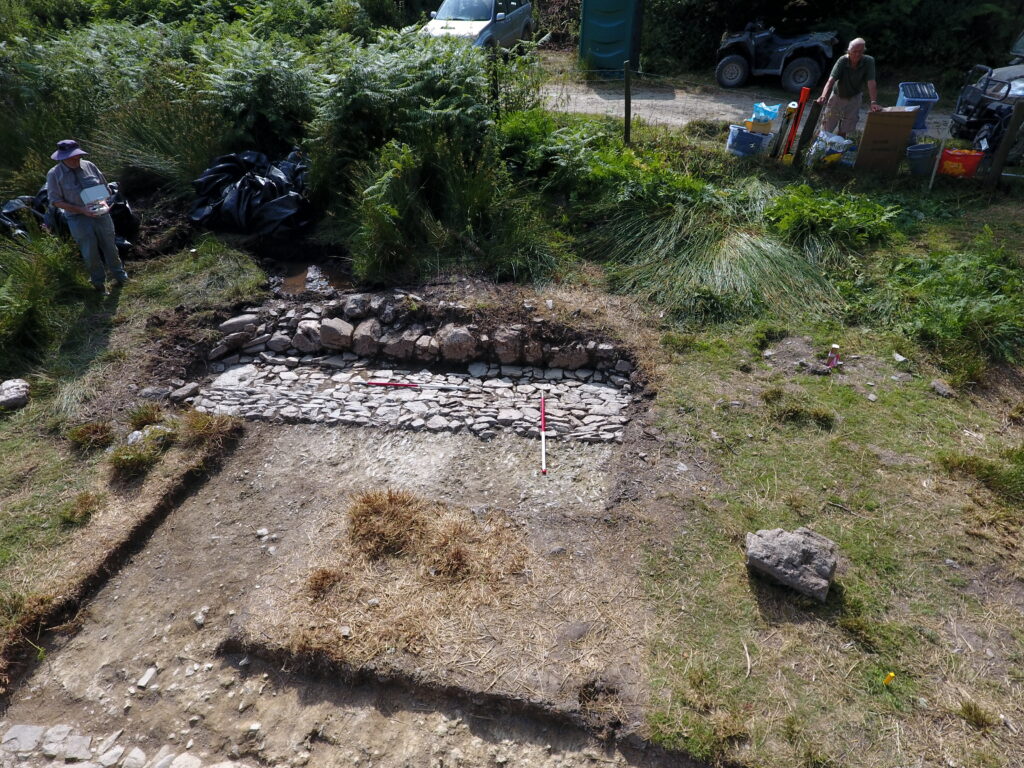Excellent Public Open Days at the Trust’s excavation at Llanerchdirion farmstead, Cwmffwrn Farm.
The Trust hosted public open days on 25/26th July at its first ever archaeological dig. Dr Jemma Bezant from University of Wales supervised our activities and we can say that the event far exceeded our expectations……..
• Angela and Ian Lewis, who own and farm Cwmffwrn Farm were exemplary hosts and even managed to encourage a metal detectorist friend to join us.
• The weather was kind.
• A total of 30 people visited the excavation over the weekend and were able to get involved in a whole range of activities including digging, scraping and cleaning, examining finds, surveying… and having a lovely sociable time.
• Julian Ravest took drone photos of our final excavated surface.
• We discovered a likely stable, the wall of a building – to be explored further – and a coin and ceramics that have gone to University of Wales specialists for interpretation.
And an unexpected bonus was an impromptu rescue of a little vole, who one of our attendees later took to Herefordshire Wildlife Rescue who agreed to put it under a heat lamp, and they are hopeful of a full recovery.
Jemma will use this discussion thread to report back on the outcome of University of Wales analysis of finds. And the Trust will now plan how to continue to uncover the mysteries of Llanarchdirion.
[Click on images to enlarge]







Excavations at the old Cwmffwrn site on Monday mornings continue – and much of the layout of the farmstead is now visible. It appears to have 3 rooms and has quite a spacious feel. Here are some photos taken in July 2022. The drone aerial photo has been taken by Julian Ravest.
Monday morning excavations at the old Cwmffwrn farmstead continue. Photos by John Marshall
A few more photographs taken by Julian Lovell, of the old Cwmffwrn farmstead
Absolutely fascinating to see an archaeological site transforming into someone’s home, with a threshold and doorstep.
Our excavations at Llanerch-derion have continued this autumn and we have discovered that the area of reeds, immediately to the south of the building, was a pond. Blue puddled clay in the base of the pond is quite clear.
(Photo taken by Julian Lovell)
Further progress with our excavation at Cwmffwrn. With the help of an excavator we were able to remove some of the top soil at the top of the site to search for evidence of a continuation of the building
Archaeological field surveying continues at Cwmffwrn Farm between 10.00 – 12.30 on Monday mornings. We are a very sociable and informal group and we would be delighted to greet you if you are interested in joining us. Please email Julian Lovell if you would like to join us.
If the penny is a1910 one would the building be in use around that time, I thought it was abandoned much earlier?
Angela’s drawings lead to a discussion about the likely height of the doors of the building. I have measured the old internal and external doors at my mill – which are likely to be between 150 and 300 years old and they are 68 inches.
Thanks for the info on the height of the doors, I had estimated them at 6ft so I was a little generous.
I have drawn in the house at the top end but at the moment this is pure guesswork and wishful thinking.
Here are two drawings I made of the excavations.
We are just starting now to look at the finds we have recovered from this season’s dig. Mostly ceramics but a single coin was also recovered which I have looked at with a more knowledgeable colleague. The coin is far too corroded to be cleaned to any extent. This is likely to indicate that the coin is later rather than earlier due to changes in the metal compositions which came about in the later 19th and earlier 20th century. The person who helped me had many hundreds of such corroded un-identified examples! We tried to clean the coin carefully under a microscope but the surface of the coin started to flake off so it was not possible to see any surface details. It is speculation; but the size and weight of the coin exactly matched a cleaner example of an Edward VII penny dated to around 1910.